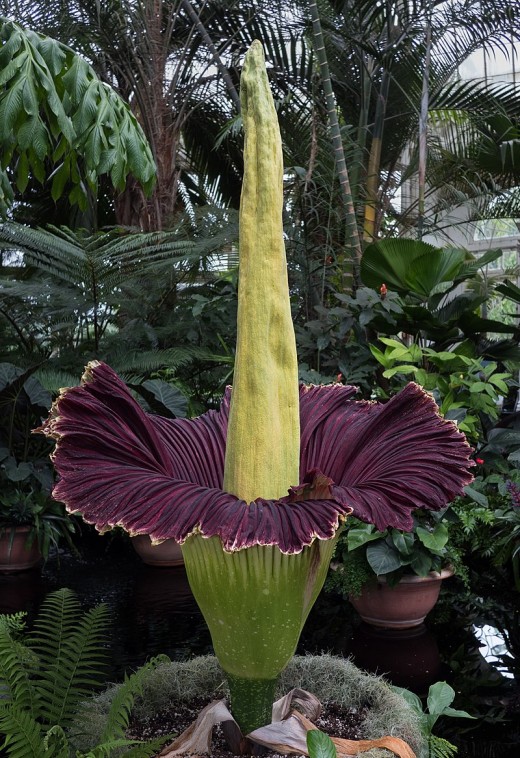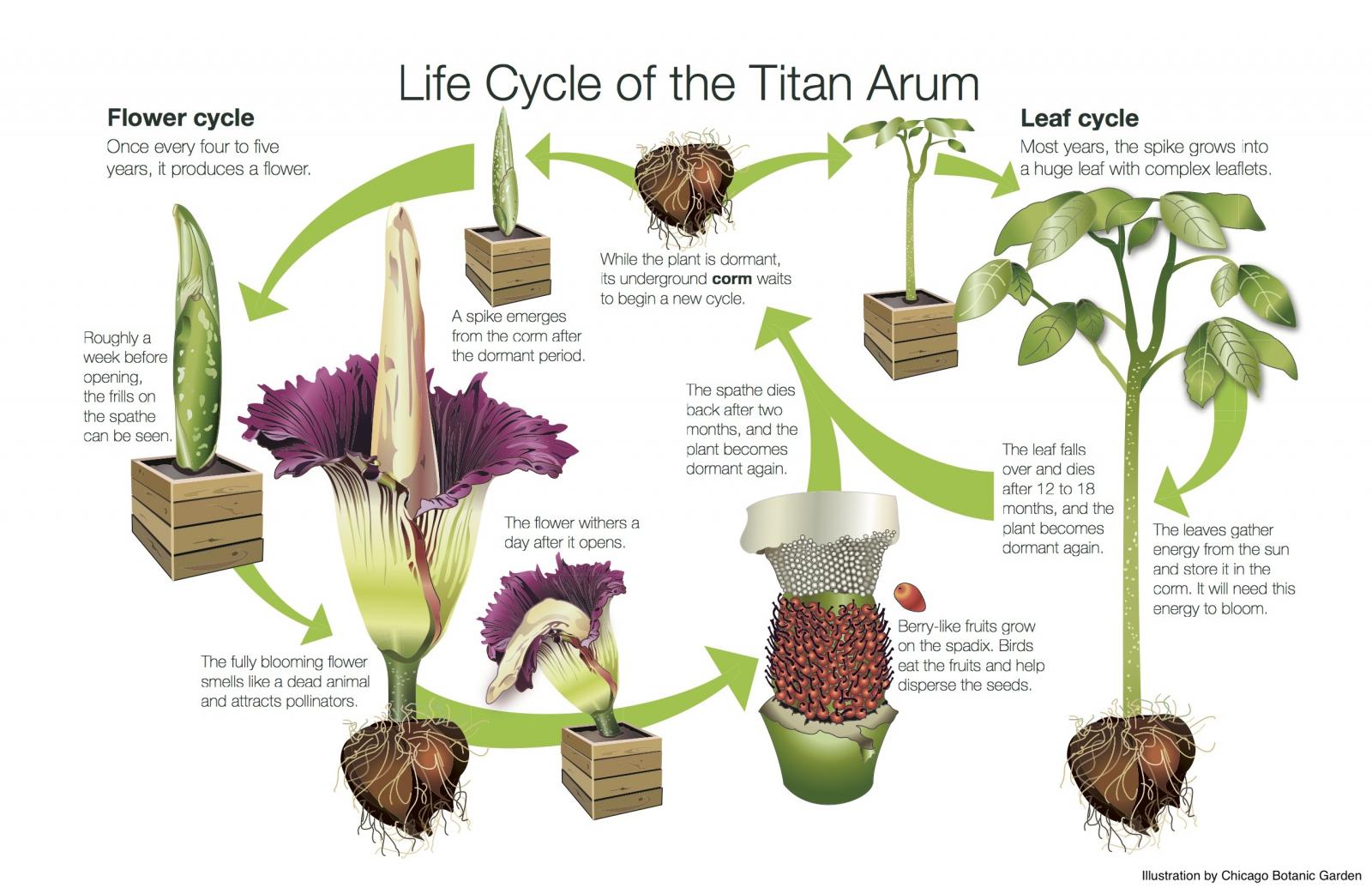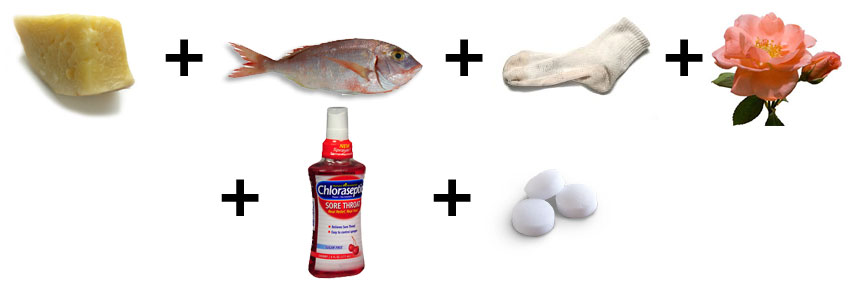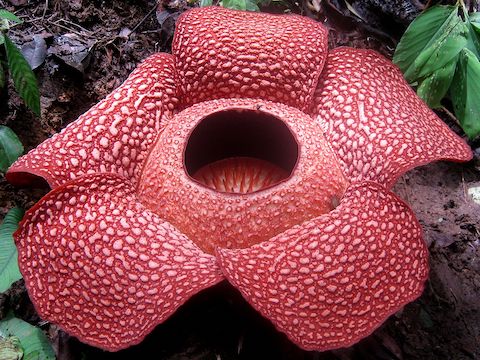
Credit: Architect of the Capitol, U.S. Capitol
Wondering what to get that special someone for Halloween? How about a bouquet of corpse flowers?
Of course, you’ll have to go all the way to Indonesia to get them. And it would be a very, very large arrangement.
There are two types of corpse flowers, and both emit a strong odor of rotting meat to attract flies and beetles to pollinate them.
Titan arum lives up to its name, with flowers topping 10 feet in height. To produce a bloom of such staggering proportions, it spends a few years as a small tree with wide sun-gathering leaves, storing energy in a giant tuber that could weigh 200 pounds.
When the tuber is ready, the tree dies to the ground. Then, rising as if from a grave, a large, solitary shoot breaks the earth, growing 3 inches a day, then finally unfolding its petals like a cloak to reveal the largest, stinkiest flower in the world.
The other, very different corpse flower, fittingly, is a parasite. It attaches itself to vines in the jungle, where the body of the plant lives within them, drawing all its water and nutrients from the host.
Then, once in a blue moon, it will produce a huge, red, stinky, platter-shaped bloom on the forest floor—the widest and heaviest flower in the world, at nearly 4 feet across and more than 25 pounds.
These denizens of the botanical underworld may not smell very good, but their spectacular appearances are a frightfully memorable sight.
Background
Synopsis: If you like the grosser side of Halloween, you’ll like corpse flowers. To attract pollinators, they give off a scent similar to rotting roadkill. There are two different varieties, both of which are incredibly smelly and grow to record-setting sizes. Titan arum is the world’s tallest bloom, and Rafflesia arnoldii is the world’s largest and heaviest single flower. Both are very elusive, but you may be able to find them by following your nose, if you can stand the smell!
- “Corpse flower” is a name given to two different flowers native to the rainforests of Southeast Asia.
- Both are thought to smell like decaying corpses, and both are featured in the Guinness Book of World Records for their incredible sizes.
- Titan arum (Amorphophallus titanum) holds the record for the tallest bloom on Earth.
- It was first discovered in 1878 on the island of Sumatra, Indonesia. It is only native to Sumatra and western Java, where it is called bunga bangkai, but it has been successfully cultivated elsewhere for many years by horticulturalists.
- Most are over 6 ft (180 cm), but in June 2010, one blooming specimen grown in Gilford, New Hampshire, measured 10 ft 2 inches (310 cm).
- It is actually a collection of thousands of tiny flowers organized into a single huge bloom known as an inflorescence.

Credit: The United States Botanic Garden/Chicago Botanic Garden
- Titan arum blooms unpredictably over a life cycle that can last from many years to even decades. Its life cycle has two phases
- In its first stage, it shoots out a set of leaves the size of a small tree (up to 20 ft or 6 m) each year for several years while it stores up energy in a large tuber called a corm. The corm typically weighs around 100 lbs (45 kg) but can weigh up to twice that.
- In its second phase, a bloom grows out of the tuber at a rate of several inches per day until it reaches its full height. It then takes 2–3 days to open up.
- A purple tube at the core of the flower, called the spadix, warms up to 98°F (37°C) and volatilizes compounds that can be smelled more than 100 ft (30 m) away.
- A large petal, called the spathe, opens to reveal a deep maroon interior that resembles raw meat, attracting carnivorous insects like flesh flies and carrion beetles, as well as dung beetles that clamber across the tiny male and female flowers located at the base of the spadix in search of a good place to feed or to lay their eggs.
- The inflorescence lasts just 2–5 days before the flower retracts back into the tuber.
- If pollinated, a large cluster of orange-red fruits develops in place of the flowers at the base of the spadix, ready to be consumed and disseminated by creatures of the rainforest. These fruits are not suitable for human consumption.
 The stench of the titan aram may only last one night. It has been chemically analyzed, and according to the Chicago Botanic Garden's blog, it consists of:
The stench of the titan aram may only last one night. It has been chemically analyzed, and according to the Chicago Botanic Garden's blog, it consists of:
- Dimethyl trisulfide, which is also emitted by cooked onions and limburger cheese
- Dimethyl disulfide, which has an odor like garlic
- Trimethylamine, which is found in rotting fish or ammonia
- Isovaleric acid, which also causes sweaty socks to stink
- Benzyl alcohol, which is found in jasmine and hyacinth and has a sweet floral scent
- Phenol, which is sweet and medicinal and smells like Chloraseptic throat spray
- Indole, which smells like mothballs in light amounts and feces in higher concentrations
- Rafflesia arnoldii is the world’s largest and heaviest single flower. This corpse flower, or stinking corpse lily, is the national flower of Indonesia, where it is known as puspa langka (rare flower).
- In January 2020, a specimen found in a forest in West Sumatra, Indonesia, weighed in at 25 lbs (11 kg) and measured 43.5 inches (111 cm) across, with five fat petals about 0.75 inches (1.9 cm) thick.
- The Rafflesia genus was first discovered on the Indonesian island of Java in the 1790’s and was later named for Sir Stamford Raffles, the lieutenant governor of the Dutch East Indies from 1811 to 1816. It has 28 different species, all found in Indonesia, Malaysia, Thailand, and the Philippines.

Credit: Rendra Regen Rais (CC BY-SA)
- These mottled red-orange and white flowers are parasitic, lacking leaves, stems, and roots. They attach to jungle vines from the grape family (Vitaceae), drawing water and nutrients directly from the tissues of their hosts.
- The only part of the parasite that exists outside of the vine is the flower, which bursts forth unpredictably to bloom for just 3–4 days. The stinky blossoms attract flies to pollinate them.
- Tree shrews and other small mammals disperse the seeds after feeding on the plant’s fruit.
- Attempts to cultivate Rafflesia arnoldii have failed for the most part. The best place to view them is in their natural habitat on the island of Borneo at Gunung Gading National Park in Sarawak, Malaysia.
- Both of these corpse flower species are vulnerable to habitat loss from extensive logging that has caused deforestation in the region. An estimated 72% of Indonesian rainforests have been clear-cut.

